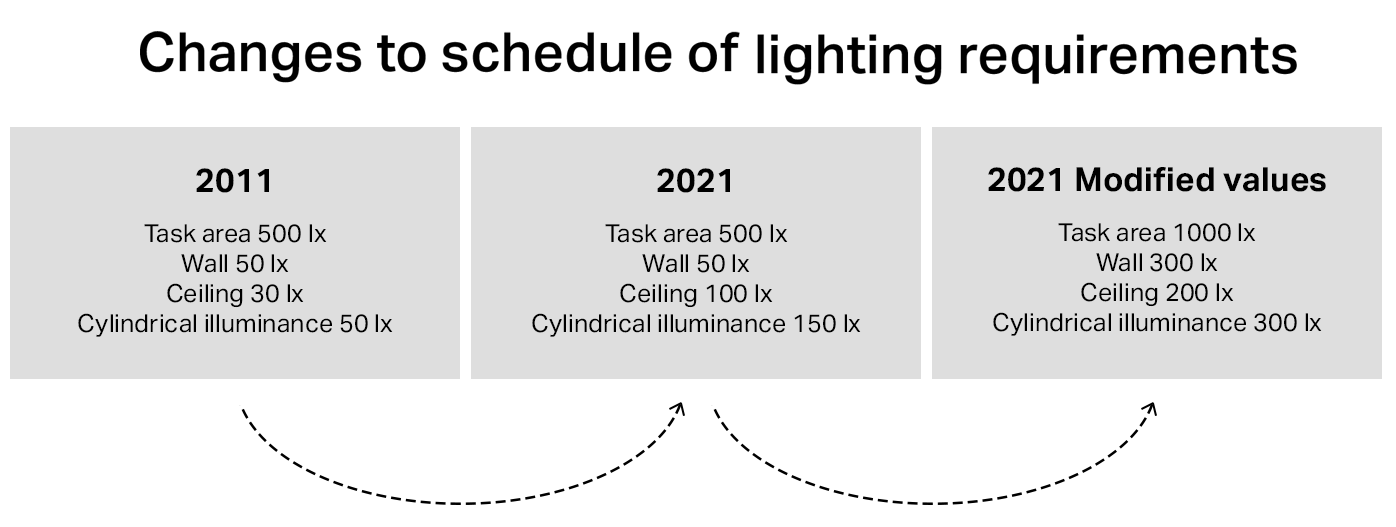Room brightness.
The new standard specifies lighting requirements for humans in indoor workplaces. The requirements for lighting mainly relate to the actual working areas and their associated areas. The illumination values presented in the standard are intended for work under normal, or corrected to normal visual conditions. The figures can be adjusted if the vision conditions deviate from the normal conditions. The illuminance can be both increased and decreased.
The illumination levels should be raised for activities that demand high accuracy or high productivity, when visual objects have small details or low contrast, with impaired vision efficiency or when vision work is carried out over long periods. The illumination should be also increased when the task area has a low daylight provision.
The illuminance can be reduced for visual objects of abnormally large size and high contrast or when visual work is undertaken for an unusually short period of time.
The new standard presents the modified illuminance values that might be suitable to use in these scenarios.

In workplaces with continuous work (normally more than two hours) the illuminance may not fall below 200 lux.
When working on commercial office lighting projects, these modified requirements must be specified in the initial design brief and project specification.
Learn more with our Workplace Lighting Design CPD.
A comprehensive guide to workplace lighting design packaged neatly into a one hour slot? Sounds too good to be true, but it's not. Our Workplace Lighting Design CPD is accredited by CIBSE and The CPD Accreditation Service, and includes everything you need to know about the subject.

